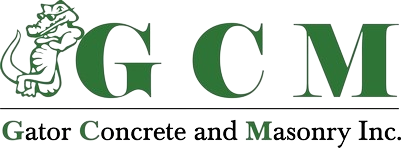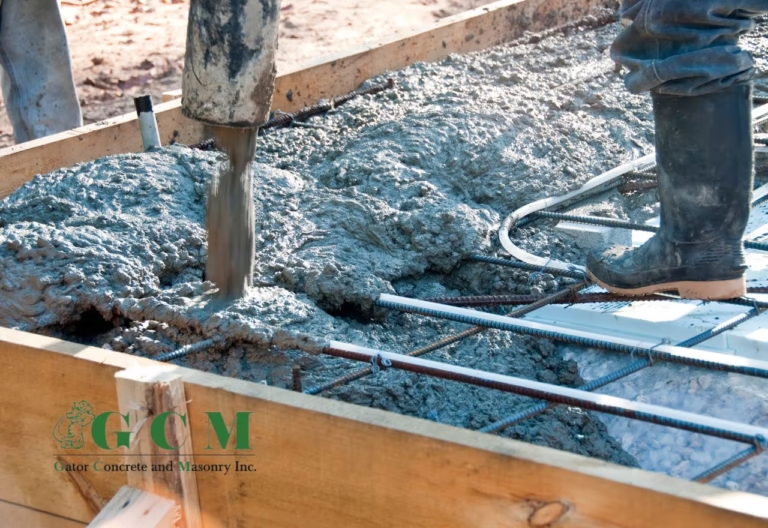Florida Heat Ain’t the Only Issue
When folks talk about concrete work in Florida, they usually jump straight to the heat. And sure, the heat’s a beast. But the real troublemaker? It’s the humidity. Sticky, heavy, relentless humidity. It sneaks up on your pour, messes with your timing, weakens your finish, and if you’re not careful, it’ll flat-out ruin a slab.
Now, we hear it all the time from new builders or out-of-town GCs: “It’s just water in the air—what’s the big deal?” Well, the big deal is that it not just about how hot it is, it’s about how fast the water leaves the concrete. Or doesn’t. In Florida, thanks to the humid air, that water sticks around way longer than you think, and that changes everything—from your setting time to the strength of the finished slab.
It messes with the clock, the crew, and your costs. You can have cracks before the pour even finishes curing. You can have weak spots. You can have callbacks. And you know what that means? Time lost. Money lost. Reputation on the line.
Concrete and Moisture: A Love-Hate Relationship
Concrete and water? They’re like old friends who sometimes fight. You need water to activate the cement—that’s how hydration works. Without enough? You get a brittle mess. Too much? You’re looking at weak concrete, surface dusting, or worse.
Now toss in Florida humidity. High moisture in the air means slower evaporation. That might sound like a good thing—more time to work the surface, right? Nope. Not really.
Here’s why:
- Excess humidity can delay setting times unpredictably.
- Slower drying can trap bleed water at the surface.
- Finishers might jump the gun, thinking it’s ready when it is not, and that creates surface blemishes.
- Surface stays soft too long, inviting cracks when it finally hardens.
What we’ve learned over the past 20 years here in Florida is that your concrete mix and the air around it must play nice. When they don’t, you get scaling, blistering, and poor bonding. And fixing that? Costs way more than doing it right the first time.
Why Florida Humidity Throws Off Your Pour
It starts before you even pump the first load. High dew points overnight leave your forms soaked. Your rebar? Could have flash rust. Steel reinforcement’s bonding capacity drops, and just like that, you’re already compromising structural integrity.
Think about those early morning pours. Everyone loves them—less heat, good lighting. But in Florida? Not always your best bet. Forms are still sweating. The air’s thick. And that means your slab’s already behind before you start.
Here’s what we’ve seen on-site:
- Sweat lines from formwork condensation.
- Ghosting in decorative concrete because of moisture vapor emissions.
- Surface discoloration from trapped moisture during finishing.
- Scaling because the surface cured wrong and lost its top layer integrity.
Weare not just pouring concrete, we’re battling the weather. And if you don’t understand that battle, Florida humidity’s going to win.
Curing Chaos: How Humidity Screws with the Clock
Let’s say you’ve got a solid mix. You start pouring, finishers are ready, and you think you’re in the clear. Then? Nothing. Slab stays wet. Float marks sink. You wait. And wait. Costs pile up. Crews sit around.
That’s the humidity.
Slower evaporation sounds like it helps curing, and sure, controlled curing is a good thing. But high humidity doesn’t equal control. It just means bleed water gets trapped near the top. That leads to:
- Dusting when water rises to the surface and weakens it.
- Blistering during finishing.
- Delayed finishing times, meaning more labor hours.
We’ve worked pours where we had to bring in fans, pop-up tents, even change finishing gear to avoid rework. Time is money. And in Florida, you need a clock tuned to the weather, not the blueprint.
Additives, Mix Adjustments, and On-Site Workarounds
Seasoned crews? We tweak everything. You can’t just use a standard mix and expect it to behave the same way every time. Florida humidity demands custom control.
Here’s what we do different:
- Low Water/Cement Ratio Mixes
- Less water means less risk of bleed and weak top layers.
- Add Air-Entraining Agents
- Helps with freeze-thaw cycles and reduces scaling, even in a warm state like Florida. Yep, humidity can mimic freeze-thaw damage when it traps moisture.
- Accelerators
- Speeds up set time so you’re not left hanging in muggy air.
- Avoid Peak Dew Point Times
- If humidity is highest at sunrise, wait a few hours. That early morning pour may look nice on paper but might cost you more in rework.
- Fogging, Covering, Wind Breaks
- These aren’t just for dry climates. They balance moisture, prevent wind-driven drying on one side of the slab, and keep curing consistent.
These are not textbook ideas. They’re field-tested. We’ve lived them. Over and over.
Real-World Florida Fixes: GCM’s Field-Proven Tips
Alright, here’s the stuff you won’t find in a manual.
- Pour after 9AM, before 2PM: That’s our sweet spot. Early enough to beat the storms, late enough for the dew to dry.
- Bring extra crew just for finishing: You might only need them 10 mins—or 3 hours. Better to have them than get caught with soft concrete and no hands on deck.
- Keep a hygrometer on site: We use basic jobsite sensors or even weather apps. Know the humidity, don’t guess.
- Don’t overwork the slab: When that surface feels close, it’s tempting to hit it. But too soon? You bring water back up. Let it sit. Trust the timing.
We’ve done this in Vero Beach, Tampa, Palm Bay—you name it. Concrete’s got attitude in Florida. You just going to stay one step ahead.
What Happens If You Ignore the Humidity
Let us be clear. If you pour concrete in Florida and ignore the humidity? You’re gambling.
- Scaling and spalling within months.
- Cracks before the first summer ends.
- Surface failure that costs you your contract.
If it’s decorative or polished concrete? You’ll see ghosting, swirl lines, even color variances you can’t fix. Good luck explaining that to the GC.
And structural slabs? Humidity affects the hydration rate. If you don’t hit that right balance, you don’t get your full psi strength. That’s a code problem. That’s insurance knocking. That’s a lawsuit waiting.
Don’t cut corners. We don’t. And that’s why folks keep calling us back.
Florida Codes & Specs: Is Humidity Considered?
You bet it is.
- ACI 305R covers hot weather concreting, and guess what? It specifically mentions humidity and evaporation rates.
- Florida Building Code factors in climate zone considerations. So when an engineer specs a slow-set mix? It’s for a reason.
As subs, it ain’t our job to argue with the engineer—but it is our job to adapt. You can’t treat a July pour in Tampa the same as an October pour in Ocala.
We prep based on spec, mix based on conditions, and pour based on experience. Period.
Humidity’s Invisible Hand on Your Concrete Work
If there’s one thing you take from this article, let it be this:
It is not just the rain. It’s the air itself.
Humidity’s sneaky. You can’t see it, but your concrete sure feels it. The mix, the timing, the tools, the labor—it all shifts based on what’s in the air.
We’ve spent two decades in this business, working right here in Florida. We know when to pour, when to wait, when to change up the mix. We don’t just build—we build smart.
Pour with Pros Who Know Florida Inside Out
Don’t gamble your project on guesswork. Contact Gator Concrete and Masonry Inc. We handle it all:
- Grading
- Drainage (ADS drains, underground retention)
- Demolition
- Foundations
- Block walls
- Tree stump removal (yes, we dig them out)
- Site cleaning
- Sand removal (yeah, we’ve cleaned up after storms too)
Florida humidity don’t scare us. We’re GCM. We work smart, we work clean, and we build like it’s our own.
Give us a call. Let’s build something that lasts.

